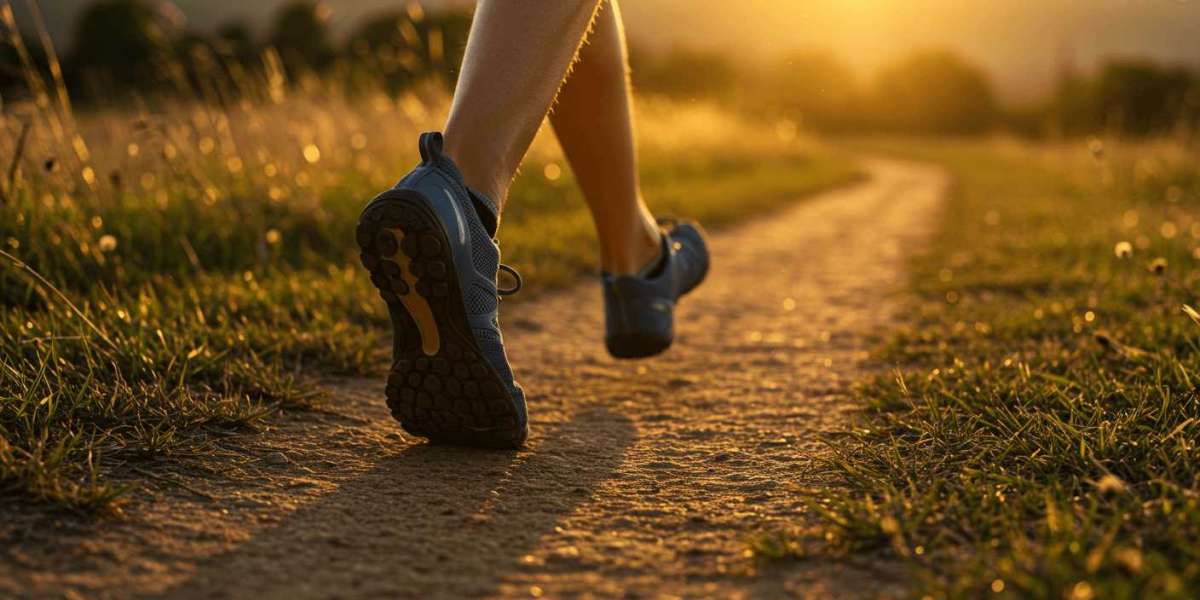In recent years, barefoot running shoes have gained popularity among runners seeking a more natural and injury-free running experience. Advocates claim that these minimalist shoes improve biomechanics, reduce injuries, and enhance foot strength, while critics argue they increase the risk of injuries such as stress fractures and Achilles tendonitis. But what does the science say?
In this article, we dive into the scientific evidence behind barefoot running shoes, exploring their benefits, risks, and how they impact running performance.
The Science Behind Barefoot Running Shoes
Barefoot running is based on the principle of natural movement. Humans evolved to run without heavily cushioned footwear, relying on strong foot muscles, tendons, and ligaments to absorb impact. Modern running shoes, with their thick cushioning and arch support, alter the foot’s natural biomechanics, potentially leading to weak foot muscles and unnatural movement patterns.
Research has shown that barefoot or minimalist running encourages a forefoot or midfoot strike rather than a heel strike commonly seen in cushioned running shoes. This shift in footstrike pattern reduces the impact force on joints and lowers the risk of knee injuries.
Studies Supporting Barefoot Running

Several studies highlight the advantages of barefoot shoes:
- A 2010 study by Lieberman et al. found that barefoot runners have a lower impact force when landing on the forefoot than runners wearing cushioned shoes. This suggests that barefoot running reduces joint stress, particularly the knees and hips.
- Research published in the British Journal of Sports Medicine (2016) found that barefoot running strengthens foot muscles, enhances stability, and reduces the likelihood of foot-related injuries.
- A Harvard study revealed that runners using barefoot-style techniques experience fewer repetitive stress injuries, as their stride is shorter, lighter, and more efficient.
These findings suggest that transitioning to barefoot may improve overall running mechanics and foot health.
Benefits of Running in Barefoot Shoes
1. Improved Running Form Efficiency
Barefoot running shoes encourage natural movement patterns, helping runners avoid overstriding and excessive impact forces. A shorter, faster cadence with a midfoot or forefoot landing leads to more efficient running.
2. Stronger Foot Muscles Arches
Traditional running shoes often weaken foot muscles by over-relying on artificial support. In contrast, barefoot shoes engage and strengthen intrinsic foot muscles, leading to better arch support and reduced risk of conditions like flat feet and plantar fasciitis.
3. Reduced Risk of Knee Hip Injuries
Since heel striking generates higher impact forces, it can lead to knee pain, shin splints, and joint issues. Studies suggest that transitioning to forefoot or midfoot striking in barefoot shoes lowers impact forces on the knees and hips, decreasing injury risks.
4. Enhanced Proprioception Balance
Barefoot shoes allow runners to feel the ground beneath them, improving sensory feedback, balance, and coordination. This increased proprioception helps runners adjust to different terrains and enhances their ability to run safely and efficiently.
5. Lightweight Flexible Design
Unlike traditional running shoes with bulky cushioning and rigid structures, barefoot shoes are lightweight and flexible, allowing for better movement control and foot agility.
Potential Risks of Barefoot Running
While the benefits of barefoot running are clear, transitioning too quickly can lead to injuries. Here are some potential risks to consider:
1. Increased Risk of Stress Fractures
New barefoot runners often overdo it, increasing mileage too quickly. The metatarsal bones can experience excessive stress without proper adaptation, leading to stress fractures.
2. Achilles Tendon Strain
Since barefoot running encourages a forefoot strike, the Achilles tendon and calf muscles absorb more strain. If these muscles are not strong enough, runners may experience tightness or injuries.
3. Lack of Protection from Sharp Objects
Minimalist shoes provide little protection from rocks, glass, or rough surfaces. Running on unfamiliar terrains without proper caution can result in cuts, bruises, or punctures.
4. Muscle Soreness Adaptation Period
Runners transitioning to barefoot shoes often experience foot and calf soreness as their muscles adapt to new movement patterns. Depending on the runner's foot strength, this adjustment period can last several weeks to months.
How to Transition to Barefoot Running Shoes Safely
1. Start Slow Gradual
Instead of immediately replacing cushioned running shoes, begin by walking barefoot or in minimalist shoes for short periods. Gradually increase time spent in barefoot shoes over several weeks.
2. Strengthen Your Feet Calves
Perform foot-strengthening exercises like:
✔️ Toe spreading – Improves foot flexibility.
✔️ Calf raises – Strengthens Achilles tendon.
✔️ Short foot exercises – Engages foot arches.
3. Focus on Proper Running Form
Adopt a midfoot or forefoot strike rather than a heel strike. Keep strides short and quick, ensuring a light landing with each step.
4. Choose the Right Barefoot Shoes
Some of the best barefoot running shoes include:
✔️ Vivobarefoot Primus Lite III – Excellent for natural running.
✔️ Xero Shoes Speed Force – Lightweight and flexible.
✔️ Merrell Vapor Glove 6 – Close-to-ground feel.
5. Listen to Your Body
Pain is a sign that you’re transitioning too quickly. If discomfort arises, take rest days, stretch, and gradually ease into barefoot running.
Are Barefoot Shoes Better for Running? The Verdict
Scientific research supports that barefoot running shoes encourage a more natural gait, reduce knee impact, and strengthen foot muscles. However, proper adaptation is crucial to avoid injuries.
For runners with weak foot muscles or a history of injuries, transitioning should be done slowly with strengthening exercises. For those who prioritize natural movement and improved biomechanics, barefoot shoes offer a promising alternative to traditional running shoes.
Bottom Line: Barefoot shoes can be better for running—but only if appropriately transitioned. To fully benefit from minimalist running, runners should focus on gradual adaptation, proper technique, and foot strengthening.
Final Thoughts
The debate over whether barefoot shoes are better for running is ultimately individualized. While scientific evidence highlights the biomechanical benefits, the transition must be done with care and patience.
If you’re considering switching to barefoot running, start slow, listen to your body, and focus on technique. You can enjoy a more natural, efficient, and injury-free running experience with the right approach.








